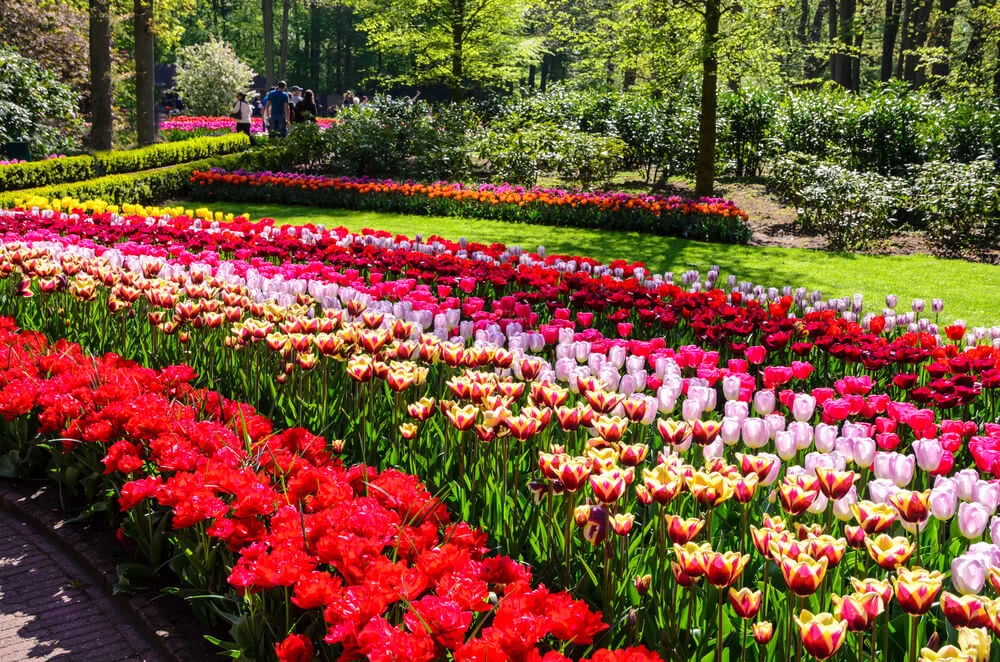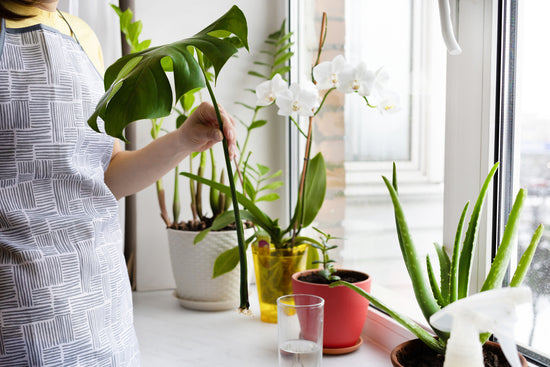Color is the most conspicuous element in the landscape and is usually the focus of most homeowners. Color is found in the soft-scaping features like flowers, foliage, bark, and fruit of plants. It is also found in hardscaping features like buildings, rocks, pavers, wood, and furniture.
However, the seasonal flowering plants consist of all imaginative hues and throw an opportunity to decorate the garden artistically.
An essential study of natural colors will be helpful in formulating color schemes in the backyard. The use of color is guided by color theory (use of the color wheel) to create color schemes.
Cool colors like blue, violet and green tend to be calming and should be used in areas for relaxation and serenity. Warm colors like red, orange and yellow tend to be more exciting and should be used in areas for entertainment and parties.
An amateur gardener tends to create a riot of colors by indiscriminately planting flowering annuals of all shades. This practice is undesirable and has a temporary effect.
It is a good idea to develop flower beds according to color schemes for ideal results.
Read about how to develop a flower bed.
The arrangement of colors in flower beds may be classified into following three basic color schemes:
1. Monochromatic scheme:
It is arranging different tones of the same color either of same species or in combination with various species.Landscape with a monochromatic theme will have plants producing the flower of one color. For example, a yellow monochromatic color scheme with variation in height is possible with yellow marigold, yellow antirrhinum, nasturtium, coreopsis, viola and sunflowers.
Similarly, a flower bed can be developed by using all the white colored annuals or red-pink colored annuals.

2. Analogous scheme:
Also known as harmonious color scheme, this can be achieved by using closely related colors, or any three to five colors that are adjacent on the color wheel.A soft or cool harmony can be accomplished by using annuals with a range of blue-purple-lavender colors like Sweet peas, China aster, Petunias; whereas a warm balance is possible by using yellow with orange flowers like different varieties of marigolds.

3. Complementary scheme:
The use of two opposite or contrasting colors is called complementary color scheme, eg. blue and orange, red and green, violet and yellow etc. The red salvias grown against a lush green hedge form a beautiful contrast.With thoughtful imagination, one can arrange series of such variations in a flower bed. Annuals with multi colored or variegated flowers automatically create a complementary scheme.

Height does matter:
Along with a proper combination of colors, the height of an annual plant and time of flowering is crucial. Tall plants such as Hollyhock, Sunflower, Tithonia, and Marigold are put in the background.Plants medium in height like Antirrhinum, Zinnia and Larkspur come next in order; whereas shorter plants like Phlox, Dianthus, Sweet alyssum, and Pansy are arranged in front rows of bed.
The annual beds should also harmonise with other plants of the garden such as shrubs, trees, hedges and lawn.

You may want to read more about what's the texture of your garden plants?
Happy gardening!










